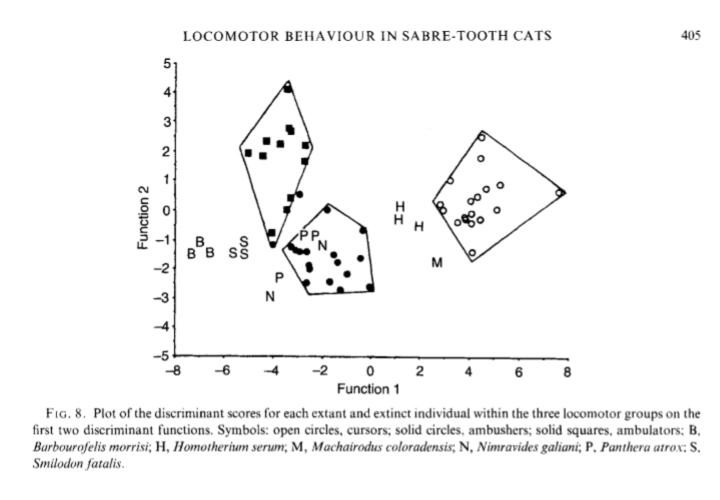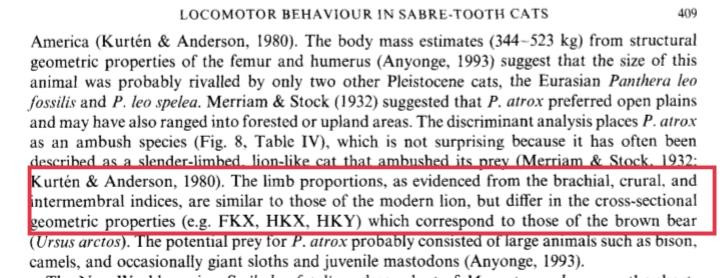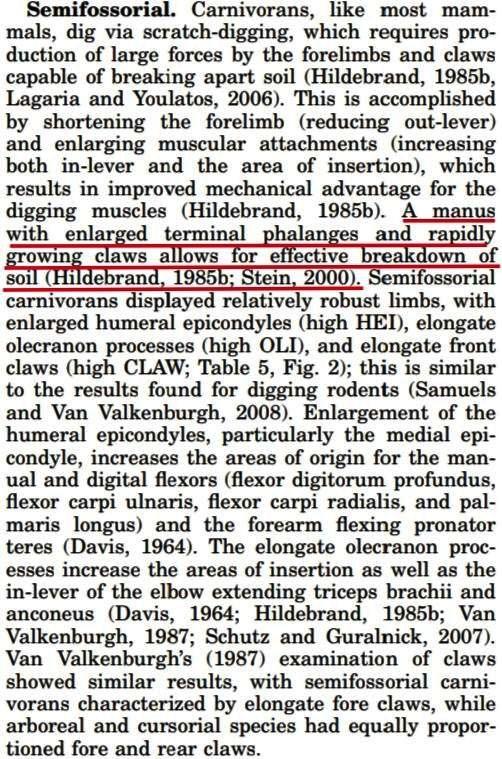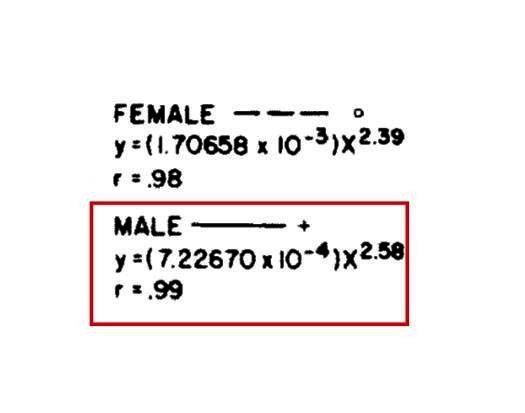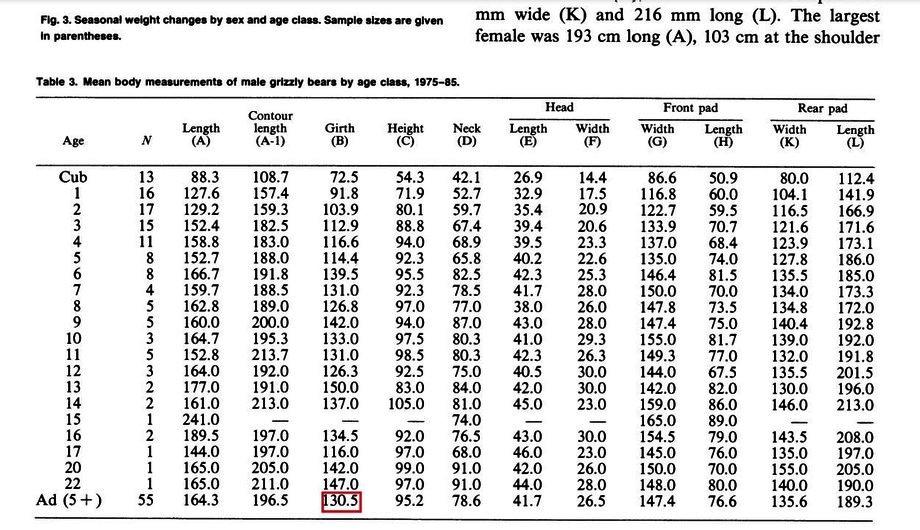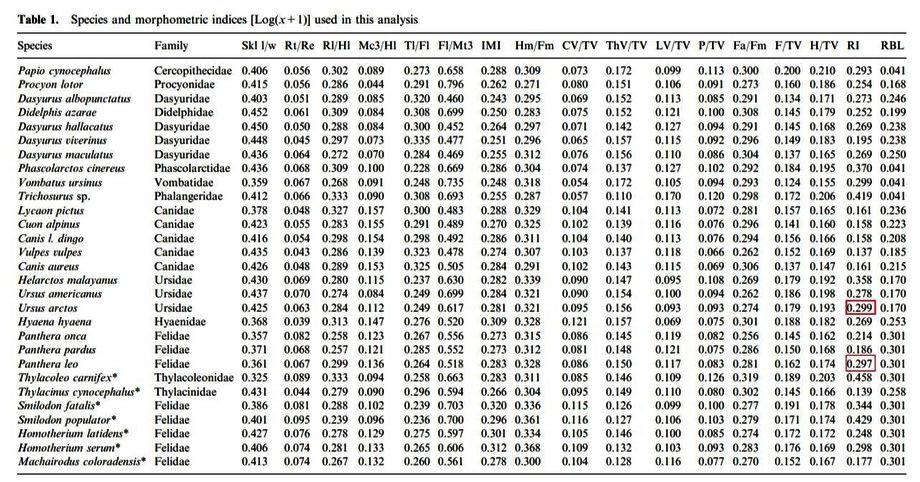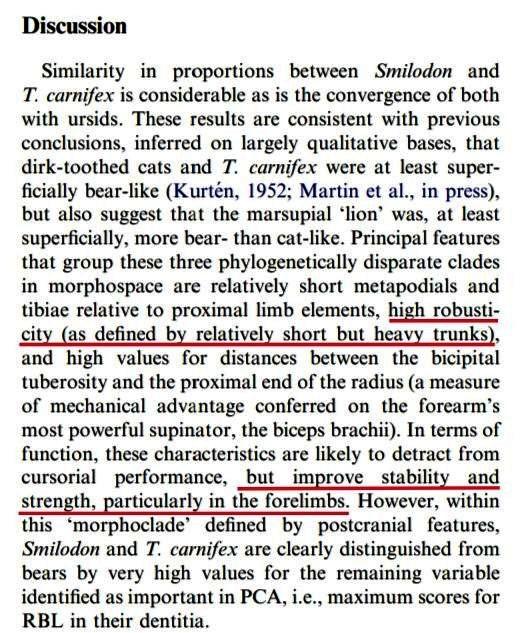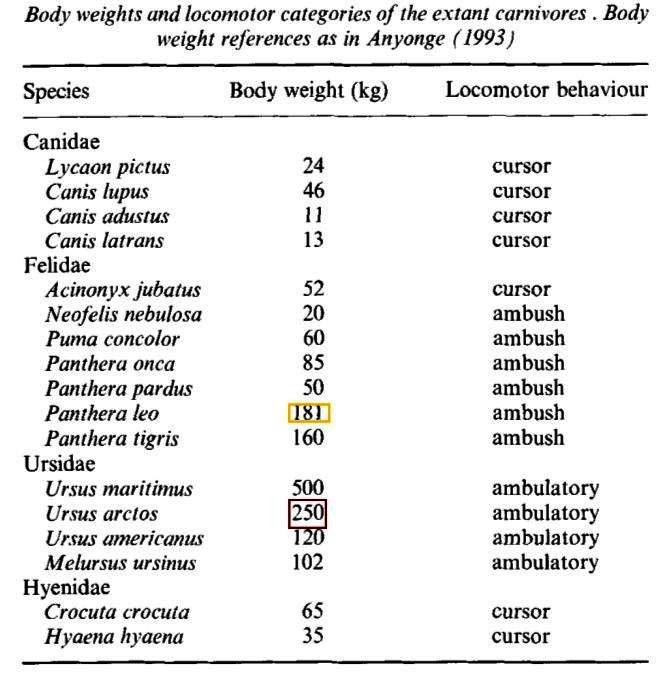Shoulder Hump:
Brown Bears have a distinctive hump between their shoulders , where the huge sets of muscles that power the forelegs and neck are anchored.This hump gives a bear extra strength and power.
P.Leo : Absent
U.Arctos : Present
Edge : U.Arctos
Scapula Shape Index:
It's scapula width/length ratio.Higher score indicates greater muscle attachement such as infraspinatus supraspinatus and subscapuralis on the shoulder joint as well as greater ability to make certain movements like full-functional upper extremity movement including protraction,retraction,elevation,depression,upward rotation,and downward rotation all else being equal.
P.Leo : 77%
U.Arctos : 87%
Edge : U.Arctos
SAI:
Surface area of lateral aspect of scapula relative to scapula length ((-
Scapula area)/Scapula length). Higher score Indicates greater relative size of muscles involved in the transfer of forces from the trunk to the forelimbs and in stabilizing the shoulder joint.
P.Leo : 80%
U.Arctos : 84%
Edge : U.Arctos
SMI:
Deltopectoral crest length divided by humerus length. Higher score Displays greater mechanical advantage of deltoid and pectoral muscles at the shoulder joint.
P.Leo : 58%
U.Arctos : 72%
Edge : U.Arctos
API:
Acromion process length/scapula length. Higher score in this ratio increases attachment for the deltoid muscle.
P.Leo : 8%
U.Arctos : 19%
Edge : U.Arctos
Scapula Length Index:
Scapula length divided by forelimb length. Higher score Indicates greater speed of movement via relative proportions of components of the proximal forelimb.
P.Leo : 33%
U.Arctos : 31%
Edge : P.Leo
HRI:
It is humerus mediolateral diameter at mid-shaft/humerus length.Robust forelimb bones protect the animal from violent stresses during
grappling.
P.Leo : 9%
U.Arctos : 11%
Edge : U.Arctos
HRI2:
It is humerus anteroposterior diameter at mid-shaft/humerus length. Robust forelimb bones protect the animal from violent stresses during grappling.
P.Leo : 12%
U.Arctos : 11%
Edge : P.Leo
HRI3:
It is the ratio of the sum of the anteroposterior and mediolateral external diameters to the maximum length. A low DF1 score would be expected in species with limb bones that are built to withstand relatively high stresses either during locomotion or prey capture.
P.Leo(ambusher): exact value unknown
U.Arctos(ambulator) : exact value unknown
Edge :U.Arctos(ambulator)
HCMI:
It is Humeral circumference/articular length Often-used variable in analyses of bone strengths in locomotion. The higher the ratio is, the thicker the Humeral bone is.
P.Leo : 32%
U.Arctos : 34%
Edge : U.Arctos
HKY:
values closer to 100% signify relatively thinner cortical bone and values closer to 0% signify relatively thicker cortical Humeral bone.
P.Leo : exact value unknown
U.Arctos: exact value unknown
Edge : U.Arctos
HKX:
values closer to 100% signify relatively thinner cortical bone and values closer to 0% signify relatively thicker cortical Humeral bone.
P.Leo : exact value unknown
U.Arctos : exact value unknown
Edge : U.Arctos
HEI:
The HEI index measures the relative size of wrist stabilizing muscles and well as several grasping muscles in area which facilitate prey grasping such as m. pronator teres, m. extensor carpi radialis, m. extensor carpi ulnaris, m. flexor carpi radialis, and m.flexor carpi ulnaris ,m. extensor digitorum communis, m. extensor digitorum lateralis, m.flexor digitorum superficialis, m. palmaris
longus,and m. flexor digitorum profundus.These muscles also likely help stability, pushing, and
agility when legs are on ground.
P.Leo : 26%
U.Arctos : 30%
Edge : U.Arctos
PC2:
Scoring intermediate or low on PC2 are carnivorans that use their forelimbs to subdue,manipulate or excavate food items.Carnivorans scoring low on PC2, i.e. grapplers like
felids, have relatively shallow trochlear furrows and relatively large and distally-projecting medial trochlear flanges. These features provide extra stability against forces acting in a nonparasagittal plane.
P.Leo : -0,531
U.Arctos : -7,045
Edge : U.Arctos
HTI:
It's Humeral trochlear length/Humeral length. Higher score increases muscle attachement on
the elbow joint and allows for more ulnohumeral flexion and extension and more ability to distribute large loads.
P.Leo : 19%
U.Arctos : 21%
Edge : U.Arctos
HDWI:
It is Humeral distal width/Humeral length ratio, correlated with resistance to stresses at the elbow joint. A higher score also increases muscle attachement.
P.Leo : 26%
U.Arctos : 28%
Edge : U.Arctos
Brachial Index:
This measures radius length/humerus length. Lower scores in this ratio indicate greater forelimb muscle mechanical advantage and results in stronger muscles all else being equal.
P.Leo : 91%
U.Arctos : 86%
Edge : U.Arctos
Brachial Index 2:
This measures ulna length/humerus length. Lower scores in this ratio indicate greater forelimb muscle mechanical advantage and results in stronger muscles all else being equal.
P.Leo : 110%
U.Arctos : 96%
Edge : U.Arctos
Forelimb Proportion Index:
Length of proximal forelimb relative to length of distal forelimb ((Scapula length + Humerus length)/(Radius length + Metacarpal length)). Higher score Indicates greater degree of
morphological specialization for producing large out-forces in the forelimb.
P.Leo : 141%
U.Arctos : 162%
Edge : U.Arctos
OMA:
Length of olecranon process relative to length of distal forelimb (Olecranon length/(Radius length+ Metacarpal length)). Higher score Indicates greater anatomical mechanical
advantage of triceps brachii, an elbow
extensor.
P.Leo : 20%
U.Arctos : 20%
Edge : Draw
URI:
It is ulna mediolateral diameter at mid-shaft/humerus length. As mentioned above for humerus and radius robusticity, Robust forelimb bones protect the animal from violent stresses during grappling.
P.Leo : 5%
U.Arctos : 6%
Edge : U.Arctos
URI2:
This measures ulna anteroposterior diameter at midshaft divided by ulna length. As mentioned above for humerus and radius robusticity, a robust ulna resists stresses on bones during fights and increases resistance to bites to the forelimb.
P.Leo : 8%
U.Arctos : 10%
Edge : U.Arctos
RRI:
This measures radius mediolateral diameter at midshaft divided by radius length. As mentioned above for humerus robusticity, a robust radius resists stresses on bones during fights and increases resistance to bites to the forelimb.
P.Leo : 9%
U.Arctos : 10%
Edge : U.Arctos
RRI2:
This measures radius anteroposterior diameter at midshaft divided by radius length. As mentioned above for humerus robusticity, a robust radius resists stresses on bones during fights and increases resistance to bites to the forelimb.
P.Leo : 6%
U.Arctos : 6%
Edge : Draw
Styloid width index:
Styloid width relative to radius length. Higher score indicates greater relative robusticity of distal forelimb.
P.Leo : 30%
U.Arctos : 33%
Edge : U.Arctos
PMA:
Length of pisiform relative to length of manus. Higher score Indicates greater anatomical mechanical advantage of flexor carpi ulnaris, a wrist flexor.
P.Leo : 33%
U.Arctos : 45%
Edge : U.Arctos
MANUS:
Manus digit 3 proximal phalanx length divided by metacarpal 3 length.Higher score Indicates
greater relative proportions of proximal and distal elements of the manus and size of the palmar surface.
P.Leo : 39%
U.Arctos : 55%
Edge : U.Arctos
Foot Posture:
All else being equal, species that are able to adopt plantigrade foot posture, such as bears,badgers, wolverines, many rodents, spider monkeys, and great apes, should be able to apply substantially greater free moments to the ground than species that are restricted to digitigrade or unguligrade foot posture. Relative to digitigrade foot posture, plantigrade posture improves performance in lateral striking, lateral pushing, downward striking,forward pushing and rearward pulling.
P.Leo : Digitigrade
U.Arctos : Plantigrade
Edge : U.Arctos
Studies Used For The Above Comparison :
https://www.researchgate.net/publication/298056854_Sexual_selection_on_skeletal_shape_in_Carnivora
https://www.researchgate.net/publication/7531697_Body_size_ofSmilodon_Mammalia_Felidae
Most ratios supported the Brown Bear, which makes the Ursid an overall stronger, more robust,more muscular and better grappler than the "King Of Beasts" with more stability and the ability to distribute more loads and more force at similar size. Additionally, Ursus Arctos has longer claws than Panthera Leo which would give the Former another advantage as demonstrated here :
It's also worth mentioning that Brown Bears also have greater chest girth than Lions of equal body mass.In fact, a 200 kg Coastal Grizzly would have a chest circumference of 128,6 cm :
https://www.jstor.org/stable/3872886?origin=JSTOR-pdf
And Yellowstone Grizzlies which approach 200 kg on average have an even greater girth of 130,5 cm :
https://pubs.er.usgs.gov/publication/70121509
Whereas a 200 kg African Lion would get 125,3 cm using this equation :
Furthermore,Brown Bears have relatively shorter, heavier trunks :
https://pubmed.ncbi.nlm.nih.gov/18313908/
If we factor in the weight advantage a Brown Bear has on average :
Odds will increase to the Latter's favor to the point where it mostly becomes a mismatch ! A Lion wouldn't do much against it !


